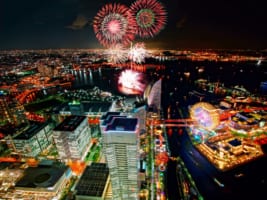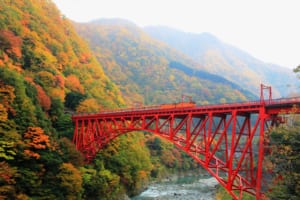11 Best Things to Do in Ibaraki
Ibaraki Travel Guide: What to Do in Ibaraki Now

Ahh, Ibaraki Prefecture. At the forefront of one of the most polarizing famous Japanese specialties (any natto lovers out there?), the stronghold of the Mito clan, one of the branches of the Tokugawa family during the Edo period, and home to one of the most important cities in the whole country in terms of science due to the high concentration of scientific research facilities, among many more interesting things. Sitting on the northeastern side of the Kanto region and flanked by the Pacific Ocean on the eastern border, Ibaraki tends to fly under the radar for many foreign visitors to Japan, which is why I’m here to advocate for these awesome lands with a list of the Best things to do in Ibaraki!
With this Kanto Region Bucket List, let’s also check out the surrounding tourist attractions: Best Things to Do in Kanto
*Please note that this article contains affiliate links.
1. Deplete Your Camera Batteries at Hitachi Seaside Park

Check out more about Hitachi Seaside Park in the following articles.
▶ Kochia Carnival at Hitachi Seaside Park Autumn
▶ Nemophila Harmony at Hitachi Seaside Park
And while you’re at Hitachinaka city, why not have an extra experience such as trying top-class Japanese Kaiseki lunch and Tea ceremony? Kyoyuzen Hanamiyako (京遊膳 花みやこ) is a restaurant listed in the Gault et Millau guide (the only restaurant in Ibaraki listed as of 2022). Experience the Japanese Kaiseki course meal at its top level with carefully selected ingredients and tableware (drink-pairing add-on option available). Complete the experience with a tea ceremony hosted by the restaurant proprietor who is also a tea ceremony master.
Book Online: Kaiseki Lunch & Tea Ceremony at Kyoyuzen Hanamiyako in Hitachinaka, Ibaraki Prefecture
2. Pay Respect to Japan’s Tallest Buddha Statue

3. Go on a Relaxing Hike at Mt. Tsukuba

▶ Mt. Tsukuba official website: https://mount-tsukuba.com/
▶ Mt. Tsukuba cablecar and ropeway official website: https://www.mt-tsukuba.com/global/en/
A good way you can enjoy an Mt. Tsukuba hike is by being part of a hiking tour. There is a half-day tour you can take with an English-speaking, highly experienced guide who can customize your tour depending on your hiking experience and preferences. Experience Mt. Tsukuba to its fullest by checking out little-known paths and breathtaking view spots while hearing detailed explanations and fascinating stories about the mountain.
Book Online: Guided Mt. Tsukuba Hiking Tour (Half-Day) With a Veteran of 400 Climbs!
4. Take a peaceful stroll in Kairakuen

 Access Access |
5-min walk from Kairakuen Station |
|---|---|
 Official Website Official Website |
https://ibaraki-kairakuen.jp/en/language/ |
5. Discover the mythical birthplace of Japan at Oarai Isosaki Shrine

6. Walk Under a Tunnel of Leaves at Hananuki Valley

 Access Access |
20-min drive from Takahagi Station |
|---|---|
 Official Website Official Website |
https://www.city.takahagi.ibaraki.jp/sp/page/page000012.html |
7. Cycling & Lotus Root Digging around Lake Kasumigaura
Another popular spot in Ibaraki is Lake Kasumigaura (霞ケ浦). Located in the mid-east area of Ibaraki, Lake Kasumigaura is the second largest lake in Japan, only coming behind Lake Biwa in Shiga prefecture. The lake is a popular spot for cruising, fishing, and birdwatching.
Part of the lake borders the cities of Kasumigaura and Tsuchiura which are particularly famous for cycling and being the number 1 Lotus root (蓮根) producer in Japan. The cycling part is famous mainly because of the cycling route you can take around the lake which has little ups and downs across its 140km circumference. You will be surprised at how Tsuchiura station is built and adjusted so that cycling enthusiasts can enjoy their stay to the fullest. And regarding the lotus root, this is a popular ingredient in Japanese cuisine that can be prepared in various ways. When you cut the root, you will see many holes in the cross-section. In Japan, it is said that you can see into the future through these holes, thus, eating it brings good luck to you.
There is a tour you can take where you can experience both cycling and lotus rood digging nearby Lake Kasumigaura. This tour starts with the cycling experience around the lake. Feel the refreshing breeze while enjoying the spectacular view of the lake (You may even spot the Ushiku Great Buddha in the distance if the weather conditions allow it). Then you will have the unique experience of digging up lotus roots, assisted by local producers. They will lend you all the gear necessary and show you how this unique process is done. It is definitely a set of experiences you won’t be able to have elsewhere.
Book Online: Lake Kasumigaura Cycling Tour & Lotus Root Digging Experience in Ibaraki Prefecture
8. Pick Seasonal Fruits in Ibaraki

9. See some of Japan’s best Fireworks in Tsuchiura

 Access Access |
8-min drive from Tsuchiura Station |
|---|---|
 Official Website Official Website |
https://www.tsuchiura-hanabi.jp/ |
10. Embark on a Tour of Sake Brewery

▶ Ibaraki Sake Brewery Association official website: http://ibaraki-sake.or.jp/
A tour we highly recommend is the Sake pairing experience at Sudo Honke (須藤本家). Sudo Honke is Japan’s oldest sake brewery (founded in 1141) with a rich history and popularity that has attracted many famous people to visit. You can experience Sake pairing with their wide variety of products along with traditional Japanese dishes. This is a good opportunity to taste and learn the complexity and nuances of the pairing of Sake and Japanese cuisine.
Book Online: Sake Pairing Experience at Japan’s Oldest Sake Brewery Sudo Honke in Ibaraki
11. Get an Adrenaline rush at Ryujin Bridge

 Access Access |
30-min drive from Saigane Station |
|---|---|
 Official Website Official Website |
https://ohtsuribashi.ryujinkyo.jp/ |
Coming to Ibaraki for the First Time? Here’s What You Should Know
You are probably coming from Tokyo, so your most convenient ridea are either the JR Joban Line from Ueno Station or the Tsukuba Express. Bear in mind that leaving the metropolis also means there are not so many public transportation options, so renting a car should be considered. Also, if you’re just coming for a day-trip, my top picks from this list that you should definitely not miss are Kairakuen and Oarai Isosaki Shrine! These are two of the most important places in all of Japan and they’re just a short 30-min drive from each other.
▽Here are the attractions you should experience across Japan with this Japan Bucket List!▽
Check best things to do in other prefectures in Kanto below!
▽Subscribe to our free news magazine!▽
Ibaraki could be well considered one of Japan’s hidden jewels. Still reasonably close to Tokyo and full of impressive sights and experiences, it’s still unaffected by the woes of massive tourism that have started to affect some other famous Japanese locations during the past few years. But with so many interesting spots, it’s only a matter of time before Ibaraki is discovered by the spotlights! So I encourage you to take your chances and explore Ibaraki before the crowds take notice!
For more information about traveling in Japan, check these articles below, too!
▽Related Articles▽
▼Editor’s Picks▼
Written by
Photographer, journalist, and avid urban cyclist, making sense of Japan since 2017. I was born in Caracas and lived for 14 years in Barcelona before moving to Tokyo. Currently working towards my goal of visiting every prefecture in Japan, I hope to share with readers the everlasting joy of discovery and the neverending urge to keep exploring.



















